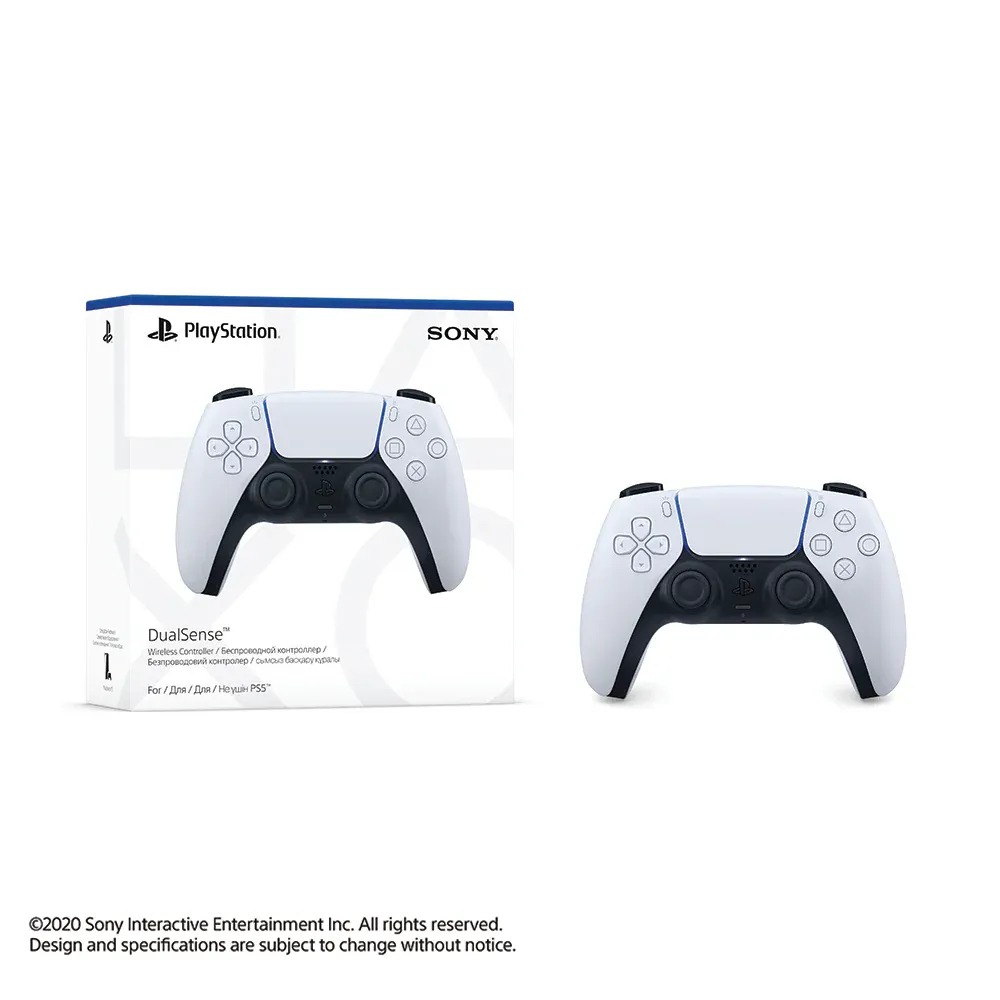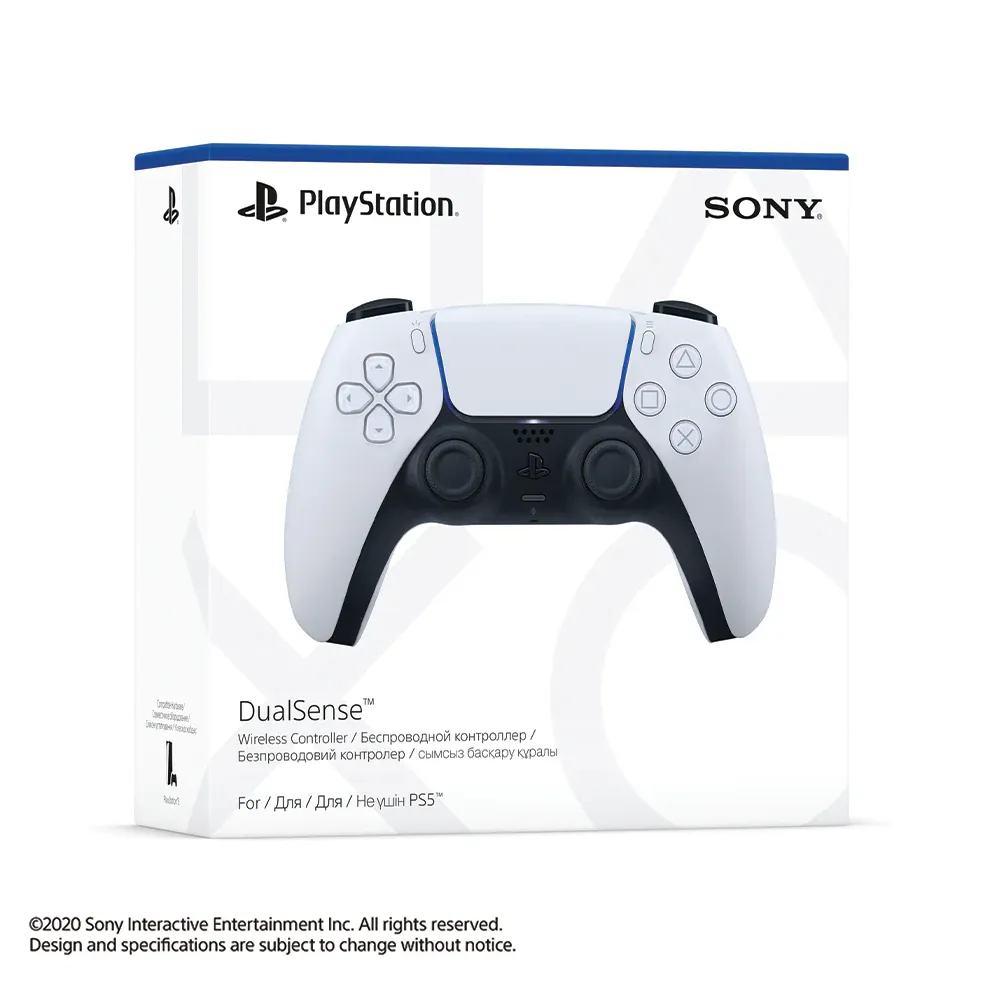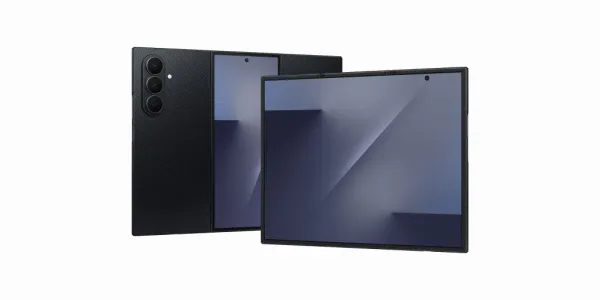Sony DualSense Wireless Gaming Controller (Red) Review: Features, Performance & Verdict
Explore the Sony DualSense Wireless Controller in Red. Full review covering design, haptics, adaptive triggers, battery life, pros & cons, and why it’s a must-have for PS5 gamers.

Introduction
The Sony DualSense controller is arguably one of the most important accessories for the PlayStation 5 ecosystem. While the standard white/black DualSense has become iconic, Sony also offers color variants, such as Red / Cosmic Red, which combine the same core hardware and features with a fresh, eye-catching aesthetic. This makes the controller not just a functional input device, but also a style statement in your gaming setup.
In this review, I’ll examine the design, ergonomics, performance, features (haptics, adaptive triggers, connectivity), reliability, and overall gaming experience you can expect from the red version of the DualSense. If you are considering a colored DualSense (or a second controller), this write-up should help you make a more informed decision.
Note: All the feature capabilities discussed here apply to the standard DualSense model; the “Red / Cosmic Red / color variant” is in effect a cosmetic variation. The product under review is Sony DualSense Wireless Controller (Red / Cosmic Red variant).
Feature Summary Table
| Feature | Specification / Description | Why It Matters |
|---|---|---|
| Design & Color Variant | Cosmic Red / Red edition (two-tone finish) | Aesthetic appeal, matching themes, personalization |
| Form Factor & Ergonomics | Slightly larger and more contoured than DualShock 4 | More comfortable grip, better hand fit |
| Haptic Feedback | Dual actuators (voice coil motors) replacing traditional rumble | More nuanced vibration effects, immersive feedback |
| Adaptive Triggers (L2 / R2) | Variable resistance, force feedback built in | Feels tension (e.g. drawing a bow, braking) |
| Built-in Microphone & Speaker | Mute toggle, voice capture, in-game audio effects | Chat without headset, immersive audio cues |
| Motion / Gyro Sensor | Six-axis motion detection | Motion input, tilt controls in supported games |
| Touchpad & Light Bar | Integrated touchpad, light strips on sides of touchpad | Extra input, visual identification of controller |
| Buttons & Layout | PS button, Create button, triggers, bumpers, sticks | Familiar PlayStation layout with “Create” replacing “Share” |
| Connectivity | USB-C wired, Bluetooth (wireless) | Flexibility across platforms |
| Battery & Endurance | Up to ~8 hours (typical) | Wireless usage time before recharge |
| Compatibility | PS5 (full support), PC / Mac (limited support) | Use across devices, but features vary |
| Firmware / Updates | Firmware updates via PlayStation / PC app | Improve performance, bug fixes |
| Limitations / Known Issues | Stick drift, battery life, partial feature support on PC | Risks and caution points |

Haptics & Vibration Feedback
This is where the DualSense truly aims to stand out. The use of dual voice coil actuators (instead of traditional rumble motors) allows far more nuanced vibration effects. Instead of simple “low/high rumble,” the controller can produce directional, gradient, and localized feedback. For example, walking on gravel might feel rough, while rain tapping might feel soft and intermittent.
Critics have lauded the haptics as a major leap forward. TechRadar described it as “one of the best controllers Sony has ever put its name on” largely thanks to its “superb features” including haptic feedback. PCWorld called the system “a real game-changer.” In gameplay scenarios where the developer supports it, you feel a more immersive sense of touch in the environment, weapons, and terrain.
However, not all games fully exploit these features, and on platforms such as PC, some titles will treat the controller like a generic input device, losing much of the haptic finesse. Also, the extra motors and functions draw more power, impacting battery life.
Adaptive Triggers (L2 / R2)
The adaptive triggers are another standout innovation. Unlike fixed mechanical triggers of older controllers, DualSense’s triggers can vary resistance dynamically, applying tension to simulate real-world forces. Pulling a bowstring, braking a car, or applying pressure in a racing game can feel more realistic.
PCWorld particularly praised adaptive triggers as “even more impressive than the haptics.” When games support them well, adaptive triggers add a tactile depth that enhances immersion. That said:
- Because it’s a mechanical subsystem, it's prone to wear or failure if overused or abused.
- In many games, you may choose to disable or lighten trigger resistance if it interferes with control fluidity (especially in fast shooters).
- On some platforms and older titles, triggers revert to standard behavior (no variable resistance).
Overall, the adaptive triggers are a bold and effective addition, especially in narrative or simulation games where resistance cues can add emotional or mechanical weight.
Microphone, Speaker & Audio Features
DualSense includes a built-in microphone array and a small internal speaker. The microphone allows you to chat without needing a headset (mute button included). In supported games, the speaker can produce local in-controller sound effects (e.g. the click of a gun, whispers, ambiance).
In practice:
- The mic is serviceable for casual voice chat, but competitive or high-quality voice communication still benefits from a dedicated headset.
- The internal speaker’s effect is limited; in high-fidelity games, it works best as a supplementary effect rather than a core audio channel.
- You can always plug in a 3.5mm headset into the controller’s audio jack (if needed) for better audio and chat.
- Some users reported mic quality is passable but not outstanding.
Motion Sensors, Touchpad & Buttons
The DualSense retains motion control capability (six-axis gyro + accelerometer), enabling tilt and motion-based input in supported games. The touchpad in the center is responsive and can support dual-touch, gestures, and clicks.
The light bar/LED indicator is repositioned from previous PlayStation controllers (moved to flank the touchpad) and is used for player identification, status, and visual feedback. The Create button replaces the Share button of previous generations, giving you menu access for capturing screenshots, clips, and broadcasting.
Button layout, trigger spacing, and stick placement remain intuitive for PlayStation veterans. Input latency is very low, especially when using wired or high-quality wireless connections.
Connectivity & Compatibility
DualSense supports USB-C wired connection and Bluetooth wireless. On PS5, full features (haptics, adaptive triggers, motion, speaker) are supported. PlayStation On PC/Mac, the controller can work, but advanced features are often limited — many games will see the controller as a “generic gamepad” without full haptic or trigger support.
Some efforts (e.g. Steam) allow mapping and enabling some features, but it's not universal. Hence, if your core use is PS5, you’ll get full advantage; if your use is PC/other platforms, results vary.
Wireless latency is generally acceptable for many games, but for competitive FPS, many users opt for wired connection to ensure absolute minimal input lag.
Firmware updates are possible via PlayStation console or companion PC software, helping fix bugs or refine performance over time.
Battery Life & Power Considerations
Battery life is perhaps the most consistent critique of the DualSense. In wireless mode, you can expect around 6–8 hours of continuous play, depending on how intensively you use haptics, adaptive triggers, lights, and microphone. PCWorld mentioned an average of ~8 hours. Compared to some rivals (e.g. Xbox controllers boasting 20+ hours), this is modest.
The rich feature set consumes power. If you mute haptics, disable light bar, or reduce vibration intensity, you can eke out more time. Also, charging while playing via USB-C is supported.
Some recent firmware / system updates (on consoles) have introduced or plan to introduce features like adaptive controller charging (which helps prevent overcharging and extend battery life) in newer PS5 models. Still, battery management remains an area Sony can improve in future iterations.
Reliability, Durability & Known Issues
No product is perfect, and the DualSense has a few recurring concerns in the user community:
- Stick Drift: Perhaps the most persistent complaint. Some controllers eventually suffer from drift — where sticks register input even when untouched.
- Trigger wear: Since adaptive triggers are mechanical and variable, they may degrade, loosen, or fail under heavy use over time.
- Battery degradation: As with all lithium battery devices, over many charge cycles, battery capacity can diminish.
- Feature support inconsistency: On non-PlayStation platforms, many features may be limited or disabled.
- Cosmetic wear: Colored variants may show scuffs or discoloration more readily than standard white/black models.
These issues do not meaningfully affect every user but are important to consider, especially if you expect heavy or competitive use over years.
Real-World Gaming Experience
Putting the DualSense into actual games:
- In narrative titles, adventure games, or story-driven experiences (e.g. Astro’s Playroom, Returnal, Horizon Forbidden West), the haptics and triggers add noticeable depth, making you feel physically tied to the actions.
- In racing and simulation titles, trigger resistance can simulate braking torque or pedal feel, adding weight to your inputs.
- In shooters, latency and responsiveness matter more than haptics; if haptics/resistance cause conflict, some players switch to minimal vibration or wired mode.
- For couch co-op or party games, the red variant adds flair and visibility of which controller is whose.
- On PC, while many games will work, missing haptics or triggers may reduce the “next-gen” feel.
User reviews echo many of these points: praise for immersion, comfort, and function, balanced with caveats about battery life and drift.
Comparisons & Alternatives
While DualSense is the first-party, native option for PS5, there are alternatives and comparisons worth mentioning:
- Xbox / Microsoft controllers often offer longer battery life, higher durability in stick design (less drift in many cases), and broad PC support — but lack haptics / adaptive triggers on PlayStation games.
- Pro / premium controllers (e.g. SCUF, Razer, etc.) provide extra mapping, paddles, swappable parts, but may lack native integration or haptic depth.
- Sony’s own DualSense Edge is a premium, customizable version with remappable buttons, swappable sticks, etc. But it comes at a much higher cost and some of the baseline haptics/trigger features match the standard DualSense.
If your priority is long battery, modding, or PC compatibility, alternatives may suit you better. But if you want seamless PS5 integration with the latest tactile tech, DualSense remains a strong choice.
Tips & Best Practices
To maximize your DualSense (especially the red version):
- Update firmware immediately — system updates and controller firmware patches can improve stability, latency, and bug fixes.
- Use wired mode for competitive or high-sensitivity input during demanding games.
- Lower vibration intensity if battery drains too quickly, or disable nonessential haptics.
- Store carefully — avoid harsh sunlight, heat, or pressure that might warp the shell.
- Clean analog sticks occasionally — dust and debris can accelerate wear or drift.
- Check warranty / return policies, especially for stick drift issues within first few months.
- Use color matching — if you already have red-themed gear or a red PS5 skin, the red DualSense blends nicely.
- Turn off lights or dim if not needed (where possible) to save battery.
FAQs
1. Is the Sony DualSense Red controller different from the standard white version?
No, the red (Cosmic Red) version has the exact same features as the standard DualSense. The difference is purely cosmetic, giving you a stylish color option.
2. How long does the DualSense Red controller battery last?
On average, the battery lasts around 6–8 hours depending on usage. Features like haptics, adaptive triggers, and microphone can reduce playtime.
3. Can the DualSense Red be used on PC?
Yes, it works on PC via USB-C or Bluetooth. However, advanced features like adaptive triggers and haptic feedback may not be fully supported in all games.
4. Does the DualSense Red controller have issues with stick drift?
Like all DualSense controllers, there have been reports of stick drift over time. Warranty coverage and proper care can help address or minimize this issue.
5. Is the DualSense Red worth buying if I already own the standard DualSense?
If you already have one controller, the red version is worth considering as a second controller, especially if you want a stylish, standout design in your setup.



